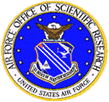Bionet Research Overview
Our research interests focus on the molecular architecture and functional logic of the brain of model organisms. We investigate in particular the Drosophila brain because the fruit fly:
- exhibits complex olfactory- and vision-driven behaviors,
- has a nervous system that is numerically five orders of magnitude smaller than that of vertebrates (the fly brain contains approximately 100,000 neurons),
- has an extensive genetic toolbox to visualize and alter any of its brain circuits.
Recent factors that have made Drosophila particularly compelling for research are:
- the availability of uniquely comprehensive descriptions of its sensory periphery, including a complete molecular characterization of olfactory sensory neurons and photoreceptors, and their projections into higher brain centers.
- the era of connectomics/synaptomics ushered in the advent of large-scale availability of highly complex fruit fly brain datasets.
Building Interactive Computing Tools for the Fruit Fly Brain Observatory
To gain insights into the functional logic of the fruit fly brain in health and disease, we are building interactive computing tools for the transformative Fruit Fly Brain Observatory (FFBO) collaborative ecosystem.
Computing with Fruit Fly Brain Circuits
To uncover the building blocks underlying cognition, we are exploring the functional logic of executable models of fruit fly brain circuits in health and disease.
Creating NeuroInformation Processing Machines
In parallel with computational studies, we are investigating machines that model information representation and neuroinformation processing in the analog (graded potentials) and in the spike domain.
The Bionet Group is supported by grants from
 |
 |
 |
 |